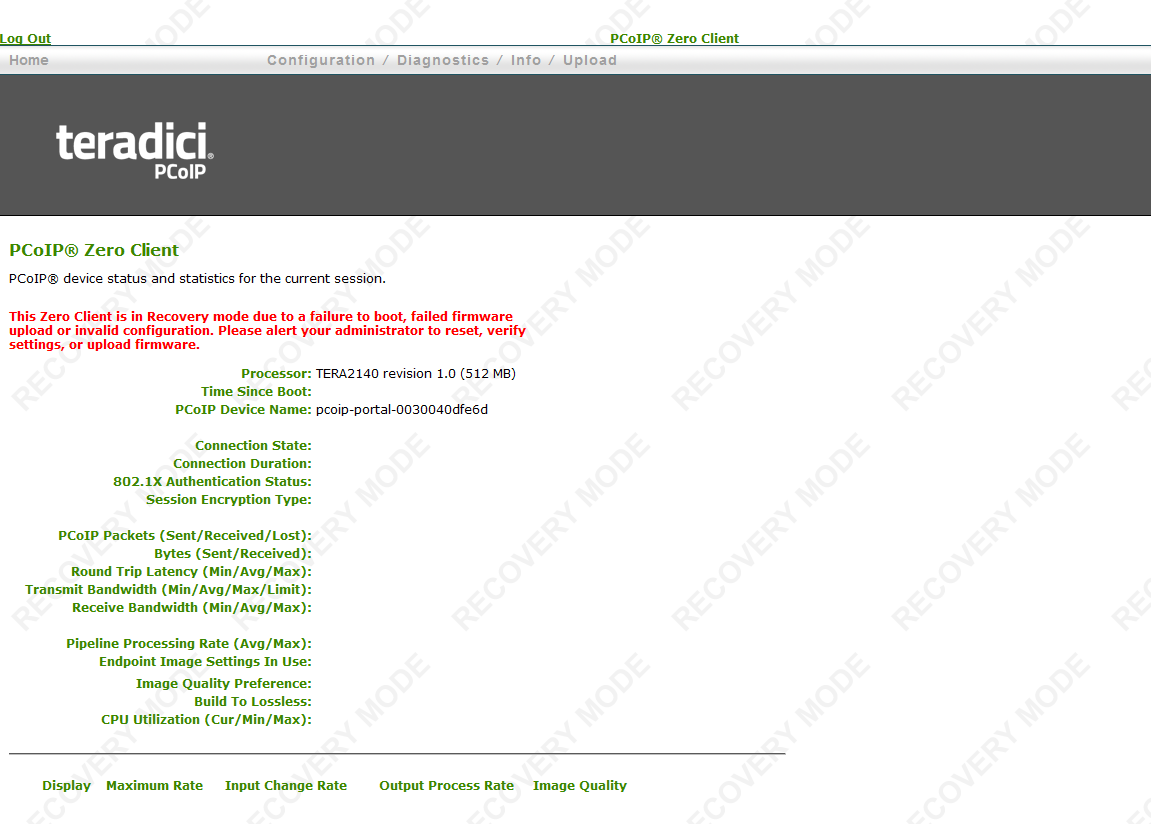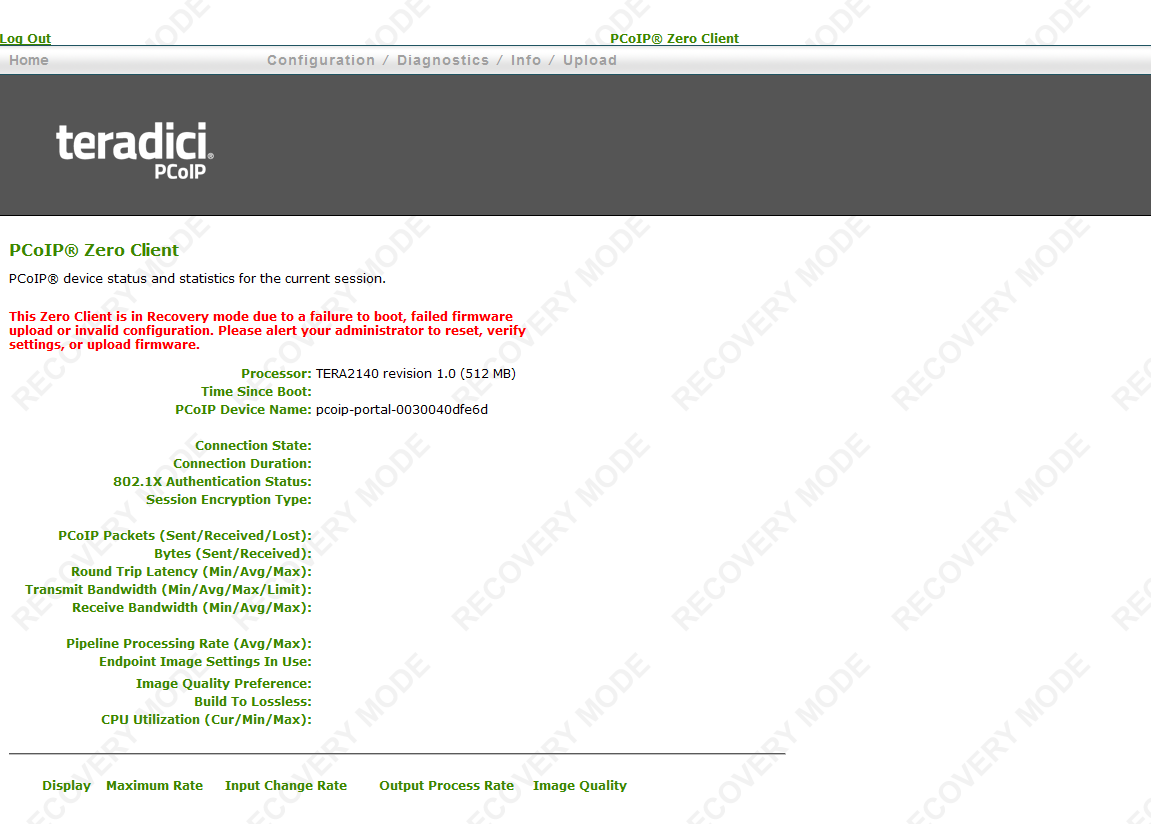What is the impact of power outage during firmware update?
Firmware 5.0.0 and newer
Due to additional functionality added to the PCoIP Zero Client over time, there is no longer space for two complete firmware images. To prevent the PCoIP Zero Client from entering an unrecoverable state from a power outage during a firmware update a new recovery mode firmware was introduced. The flash now contains a complete firmware image and a recovery mode image. This recovery mode firmware becomes active if firmware update fails due to power outage or some other reason. This recovery mode allows you to correct the configuration issues or upload a replacement firmware or certificate file.
Note: Bootloader updates are at risk of 'bricking' the client which is why we rarely update the bootloader. It has been quite some time since we have had any bootloader updates. The good news here is that the bootloader is small and only affects a small portion of the flash which minimizes the exposure if/when a bootloader update is required.
An alternate method for entering recovery mode is to triple tap the power button after the device has been turned off. This should bring the Tera2 zero client up in Recovery Mode.
Below are some screenshots from the AWI and OSD showing Recovery Mode:

Prior to Firmware 5.0.0
There is enough room in PCoIP Zero Client flash memory for two complete firmware images. We load the new firmware and do multiple checks to ensure that it is complete/valid (not tampered with, or having no bit errors during transfer etc.). If the power is interrupted while the flash is being written, the update will be corrupted, but the flash still contains the previous functional firmware. In this case, the update will need to be applied again.
Once the updated firmware is written to flash and the appropriate checks are completed successfully, the final step is to invalidate the old firmware. This is a very robust update implementation.
Note: Bootloader updates are at risk of 'bricking' the client which is why we rarely update the bootloader. It has been quite some time since we have had any bootloader updates. The good news here is that the bootloader is small and only affects a small portion of the flash which minimizes the exposure if/when a bootloader update is required.
Pertains to:
- PCoIP Zero Client 4.0.2
- PCoIP Zero Client 4.0.3
- PCoIP Zero Client 4.1.0
- PCoIP Zero Client 4.1.1
- PCoIP Zero Client 4.1.2
- PCoIP Zero Client 4.2.0
- PCoIP Zero Client 4.5.0
- PCoIP Zero Client 4.5.1
- PCoIP Zero Client 4.6.0
- PCoIP Zero Client 4.7.0
- PCoIP Zero Client 4.7.1
- PCoIP Zero Client 4.8.0
- PCoIP Zero Client 4.8.1
- PCoIP Zero Client 4.8.2
- PCoIP Zero Client 5.0.0
- PCoIP Zero Client 5.0.2
- PCoIP Zero Client 5.1.0
- PCoIP Zero Client 5.1.1
- PCoIP Zero Client 5.2.0
- PCoIP Zero Client 5.2.1
- PCoIP Zero Client 5.2.2
- PCoIP Zero Client 5.3.0
- PCoIP Zero Client 5.4.0
- PCoIP Zero Client 5.4.1
- PCoIP Zero Client 5.5.0
- PCoIP Zero Client 5.5.1
- PCoIP Zero Client 6.0.0
